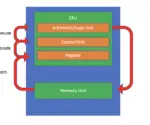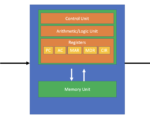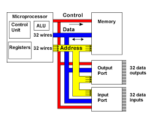Computer Architecture Archive
How PCI-Express and PCI work: An Introduction
On January 13, 2022 In Computer Architecture
Peripheral Component Interconnect (PCI) was developed by Intel as a processor-independent bus. PCI is completely in the public domain and became established as a standard for high-speed connections of peripheral devices to the motherboard. Because of its versatility, it has increasingly been used in server systems in the 1990s. PCI Express (PCIe) is a
How does a CPU Execute Instructions: Understanding Instruction Cycles
On October 15, 2021 In Computer Architecture
In this post, we will understand how a CPU executes instructions on a high level by illustrating the instruction cycle using a step-by-step example. We also cover interrupts and how they affect the instruction cycle. A CPU executes instructions using a cycle of steps known as the instruction cycle. What is an Instruction Cycle?
What is the Von Neumann Architecture
On October 4, 2021 In Computer Architecture
The von Neumann architecture is a foundational computer hardware architecture that most modern computer systems are built upon. It consists of the control unit, the arithmetic, and logic unit, the memory unit, registers, and input and output devices. The key features of the von Neumann architecture are: Data as well as the program operating
From the Computer Bus to Point-to-Point Interconnect: An Overview of Bus Interconnection Structures
On January 6, 2021 In Computer Architecture
A bus in computer architecture is a medium for transmitting information between devices. In a typical computer, you have a central processing unit, system memory, and some I/O devices that need to communicate with each other. Busses connect all of these components together as a shared transmission medium. This means a signal sent by



